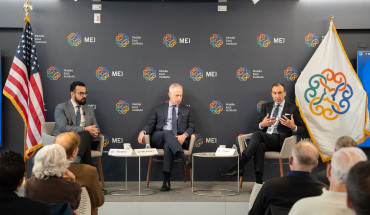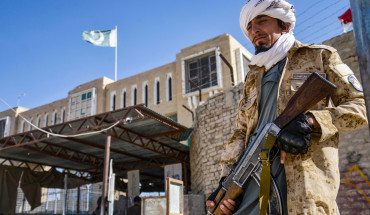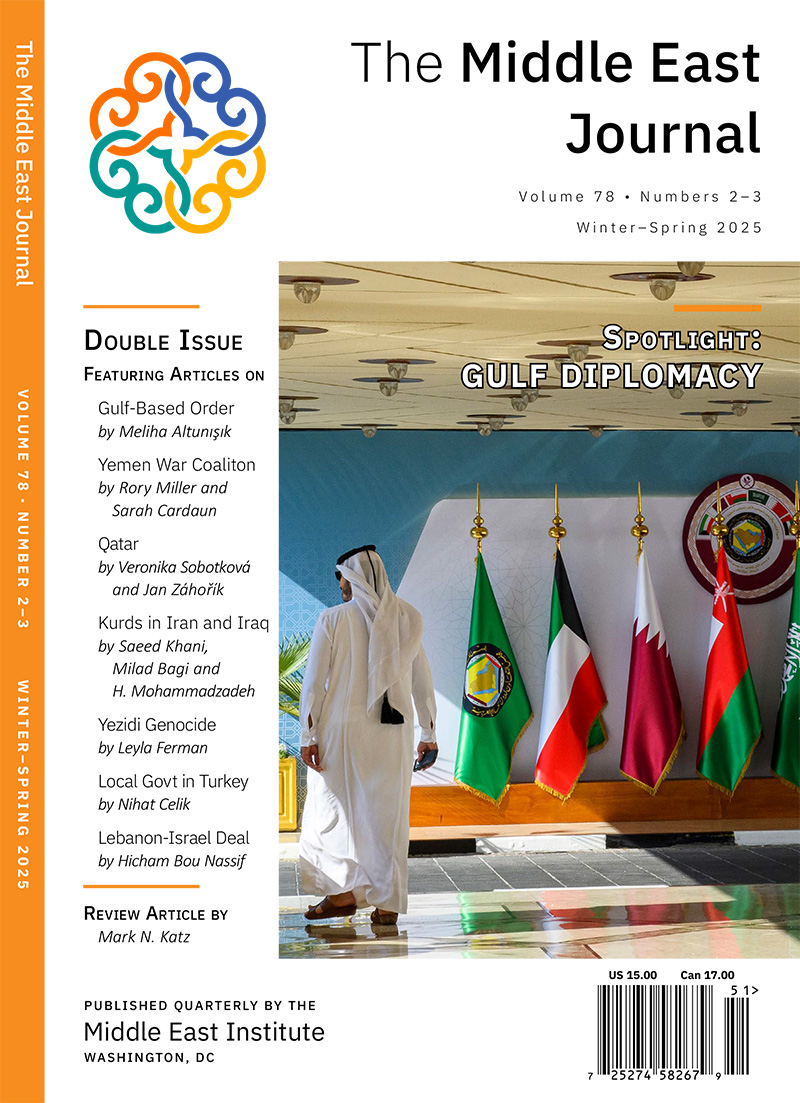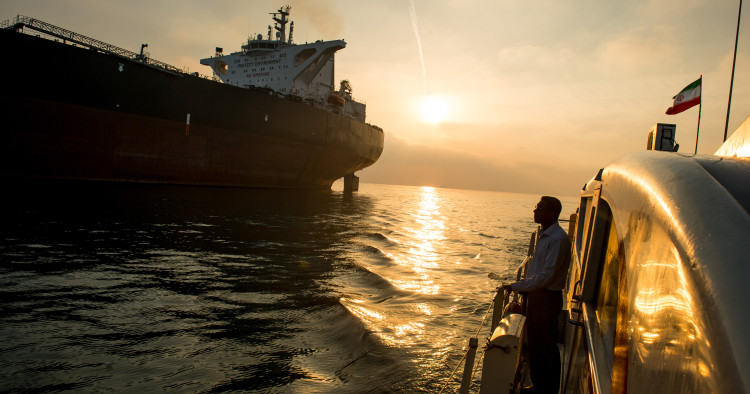With the signing of a presidential memorandum on Feb. 4, the administration of Donald Trump has returned to a “maximum pressure” campaign against Iran, but circumstances have changed drastically since the policy of intensified sanctions was originally crafted during his first term. Regional geopolitics will present the White House with a new set of variables, while changes in the petroleum markets will affect how the administration approaches sanctions on oil exports. As Washington’s ability to return to tighter enforcement of new and existing sanctions on Iran becomes clearer, Tehran’s chronic struggle to produce enough natural gas to satisfy domestic demand — despite possessing some of the largest gas reserves on the planet — continues to worsen. Given US attempts to “driv[e] Iran’s oil exports to zero” in an effort to deter Tehran’s nuclear ambitions, Iran’s domestic energy crisis may present a significant source of leverage in any talks on an updated nuclear agreement and could ultimately open the way to a new accord.
What happened in 2018, and why was it different?
When the first Trump administration pulled out of the 2015 Iran nuclear deal, or Joint Comprehensive Plan of Action (JCPOA), in 2018 and reimposed sanctions on Tehran’s oil exports, Iranian oil was being sold on the open market and had a number of major buyers. These customers, which included India, South Korea, Japan, Turkey, and others, were provided with waivers to allow a phase-out of Iranian crude purchases, which in turn gradually drove down Iran’s exports and began the process of shutting it out of the broader oil market. However controversial the decision to enter the JCPOA and roll back sanctions on Iran may have been at the time, purchases of Iranian oil that took place prior to their reimposition were entirely legitimate.
Since then, China has become the only significant market for Iranian oil exports, with many of its refiners benefitting from discounted prices relative to international benchmarks. More limited volumes had been sent to Syria, providing an energy lifeline for the government of Bashar al-Assad, Tehran’s long-time ally, before its collapse in late 2024, but these shipments were marginal relative to exports to China. Independent “teapot” refineries, which represent just over 20% of China’s total oil refining capacity, are the largest customers for Iranian oil.
Teapots are smaller, private-sector refiners that operate largely outside of the US financial system, often paying for Iranian barrels in Chinese yuan rather than US dollars. They also rely heavily on subterfuge, with imports of Iranian oil widely “rebranded” as shipments from Malaysia, Oman, or elsewhere. In early 2024, imports of “Malaysian” oil by teapot refiners were in excess of three times Malaysia’s potential production capacity. These practices make it difficult to determine exactly how much Iranian crude teapot refiners bought, but with around 90% of Iranian exports heading to China last year, and most other local refiners apprehensive of buying Iranian oil, teapots are highly likely to have accounted for over 1 million barrels per day (bpd) of crude purchases in a year when Iranian exports averaged about 1.7 million bpd.
While teapot refiners are not technically controlled by the Chinese government, their continued ability to operate suggests implicit state backing for their purchases of Iranian crude, despite long-time issues with the sector like tax evasion. They enjoy leverage to extract discounts on Iranian barrels as the only outlet for Tehran’s exports, ostensibly benefitting China by giving these refineries a steady supply of low-cost feedstock.
Impact of Ukraine war on the sanctions regime
The outbreak of the full-scale Russo-Ukrainian war in 2022 represents the largest geopolitically induced rupture to petroleum markets in years, and this has affected the trade in Iranian oil in two major ways. The first of these was the easing of enforcement of US sanctions on Iranian exports by the administration of President Joe Biden. After the war began and the US and European Union sought ways to deprive Russia of oil revenue, the shift in oil trade flows caused benchmark Brent oil prices to rise sharply, averaging about $113 per barrel (bbl) in the second quarter of 2022, the first time prices had surpassed $100/bbl since 2014. In a global macroeconomic environment already strained by inflation amid the recovery from COVID-19, the White House faced enormous pressure to control energy prices. One result was an unofficial relaxation in the enforcement of US sanctions on Iranian oil exports, which, at least in theory, limited upward pressure on prices. Since that time, Iranian crude exports have tripled from their 2019 levels of at or below 500,000 bpd to an estimated average of 1.7 million bpd in 2024.
Geopolitical developments in the Middle East later led the Biden administration to apply additional sanctions on entities engaged in the export and sale of Iran’s oil, but it never truly returned to more stringent enforcement. Key to Trump’s ability to order a rapid revival of the maximum pressure campaign is the fact that the Biden administration never actually did away with the sanctions, and it even added new measures targeting shipping and illicit trading.
The second effect of the war in Ukraine has been the rise of the “shadow fleet” and “dark fleet” that Russia uses to skirt sanctions and obscure the flow of its seaborne oil exports. While there has been some debate about the definition of the shadow versus the dark fleet, the former can generally be understood as oil tankers that operate in a legal grey area, using convoluted ownership structures to move cargoes with less transparency. The latter, by contrast, attempts to circumvent sanctions altogether by using methods to conceal the origins of oil cargoes, including turning off automatic identification system (AIS) equipment, which transmits global position system (GPS) data and other shipping information onto a global network; ship-to-ship (STS) transfers, in which one tanker offloads its cargo to another at sea to conceal its origin; or outright falsification of ownership documents. None of the above methods are new to Iran either, but the massive increase in the volumes of oil traded around the world via the shadow and dark fleets has made enforcement of sanctions on seaborne oil cargoes even harder, and these challenges are sure to extend to efforts to curb Iranian exports as well.
Success of sanctions depends on China, OPEC+
For Washington, a key advantage in the current situation is that China is already making its own early efforts to limit imports of Iranian crude, likely in anticipation of more stringent sanctions enforcement. If the administration can build on Beijing’s efforts, there will be few, if any, other outlets for Iranian barrels. Tehran’s overwhelming dependency on Chinese buyers gives its critical stream of oil revenue a single point of failure. Additionally, oil markets are highly likely to be much better supplied than they were amid the chaos following the start of the war in Ukraine in 2022. Spare production capacity by the Organization of Petroleum Exporting Countries Plus (OPEC+) is more than sufficient to offset even a complete removal of Iranian oil from the market. While OPEC+ is highly unlikely to heed Trump’s calls to increase production in order to cool prices and aid Washington’s efforts to force Russia, a key member of the OPEC+ agreement, to come to the negotiating table and end the Ukraine war, it has the ability to do so. In fact, three layers of cuts have kept over 5 million bpd in crude production offline, and OPEC+ members holding back production are keen to bring barrels back to market. Even if OPEC+ does not want to support Trump’s efforts against one of its own, tighter sanctions enforcement could ironically provide oil markets with some of the tightness the group needs to confidently ease its deep production cuts.
While Tehran is at a disadvantage given its reliance on a monopsony buyer, Iran’s lone customer is one that will be difficult for the US to target, particularly in the case of teapot refiners. Trade relations between Washington and Beijing under the Trump administration are off to a rocky start. It is conceivable that new trade agreements between the two could include a more formal deal to reduce Iranian oil imports — indeed, the Shandong Port Group’s early action to reduce Iranian crude imports has already had an impact — but by itself it is unlikely to achieve the White House’s stated goal of driving Iranian oil exports completely off the market.
Iran’s dependence on China guarantees that Iranian exports are entirely a function of Chinese oil demand. While Iran was generally able to avoid large-scale adverse impacts from weaker Chinese demand in 2024 due to its ability to offer discounts on other grades of crude favored by Chinese refiners, it underscored how over-exposed Tehran is to a single importer. This raises the specter of a Chinese demand shock that could impose a major constraint on Iranian exports. It also raises long-term concerns about overdependence on China, where electric vehicles are proliferating faster than anywhere else in the world, threatening prospects for future gasoline and diesel demand. The most pressing concern for Tehran should perhaps be Beijing’s efforts to significantly reduce the number of operating teapot refiners, the primary buyers of Iranian crude, regardless of their access to a cheap source of feedstock.
For Iran, its highly constrained oil sales deprive it of access to a dollar-denominated oil market, and it is also set to face major long-term challenges in the Chinese market, where dependence brings its own risks. As a result, the US should consider additional policies toward Iran’s energy sector it if aims to seek diplomatic concessions as part of a future negotiation.
Adding a carrot to the stick
Any significant relaxation of US sanctions prohibiting international investments in Iran’s oil and gas sector would represent a huge departure from longstanding US policy on Iran, with the exception of a brief opening during Washington’s short-lived participation in the JCPOA. However, in light of the anticipated challenges associated with using oil export sanctions to extract concessions from Iran (or achieve any other form of diplomatic progress), incentives other than easing sanctions may be worth considering. The previous iteration of maximum pressure took a heavy toll on Iran, and arguably continues to do so, although there is room for debate about the efficacy of those measures. Still, Tehran managed to survive the first Trump administration and promises to outlive the second, however difficult it may be, indicating a willingness to bear whatever pain it must so long as it does not see a pathway to a viable agreement with the US.
Given how important oil exports are for Iran, it is easy to understand why sanctions on them are usually at the top of the agenda. Yet Tehran’s regional policies are also a clear reason why the issue of lifting sanctions — and the subsequent influx of oil revenue — is so sensitive, particularly given the Islamic Revolutionary Guard Corps’ (IRGC) reportedly increasing control over oil exports. As a result, it is worth considering alternatives that may address key domestic energy needs without giving Tehran a sudden windfall of export revenue. One such measure could potentially apply to investment in the beleaguered natural gas sector, which overwhelmingly services domestic demand.
Balancing on the knife’s edge of gas dependency
Iran’s gas sector has suffered from a lack of investment that, combined with the absence of any large-scale effort to manage demand growth, has begun to result in increasingly serious supply shortfalls that are only likely to worsen. This presents a major domestic challenge for Iran that is often underappreciated abroad but will have significant political and economic ramifications going forward.
Iran possesses abundant reserves of natural gas — the world’s second largest — and despite low export levels, it is the region’s largest producer by far. But even with its high levels of production, which reached over 24 billion cubic feet per day (bcf/d) in 2024, its consumption has largely kept pace with output, leaving the country with no tangible surplus. Iran is by far the largest consumer of natural gas in the Middle East (and the fourth largest in the world), accounting for 43% of the region’s consumption last year — twice that of the next-largest consumer, Saudi Arabia.
The giant offshore South Pars field that Iran shares with Qatar — where it is known as the North Field and forms the cornerstone of the country’s liquefied natural gas (LNG) industry — has been and remains central to Iran’s ability to meet its growing demand. Over 70% of domestically consumed natural gas in Iran is met by production from South Pars, as is 90% of its gas production overall. The latest development project at the field, South Pars Phase 11, has been critical to raising production but has faced repeated delays, particularly as a result of Washington’s exit from the JCPOA in 2018, which led French major TotalEnergies (then Total) to pull out of the project.
Since then, Tehran has relied on domestic firm Petropars to develop and maintain production at South Pars, but the company lacks the technical capabilities to do so. The problem is compounded by domestic gas pipeline constraints, and consequently Iran has had to turn to imports from neighboring Azerbaijan and Turkmenistan to make up for its supply shortfall, particularly during cold winter months when demand spikes.
An improvement in Iranian energy security would also serve US interests by making Iran more reliant on its own domestic energy supplies instead of deepening cooperation with other US adversaries. The most salient example of this is Iran’s recent agreement to import up to 190 bcf/d of Russian gas, equivalent to around 2 billion cubic meters (bcm) per year, as part of a wider strategic pact between the two countries. The deal contains provisions for these volumes to eventually reach an extraordinary 55 bcm per year, which would both draw Tehran closer to Russia and provide a major outlet for Russian pipeline volumes that no longer flow to Europe.
Another possible option for alleviating Iran’s domestic energy difficulties is the expansion of renewables. Iran has strong potential for greater use of solar photovoltaic power generation but has barely developed any new capacity to exploit this. Investment in solar power generation, perhaps by neighboring Arab Gulf states, could reduce Iran’s need for gas in the power generation sector. President Masoud Pezeshkian has signaled interest in pursuing renewable power projects, representing another potential opening for energy incentives to complement US diplomacy, if and when the time comes.
What investment in natural gas does and doesn’t do for Iran and for diplomacy
Where the Biden administration’s efforts to initiate diplomacy with Iran were often framed as an effort to return to the JCPOA, the second Trump administration is likely to seek a new agreement entirely, no doubt based in part on its heavy criticism of the original 2015 deal. It is also likely that Tehran, with its previous experience in mind, will seek to extract greater concessions from Washington that will potentially go beyond relief from sanctions on its oil exports. Iran may seek concessions in other areas outside the energy sector, but whatever position it attempts to take in any potential negotiations, the harsh reality of its domestic gas shortages will remain. Any efforts to make progress on the nuclear issue should bear this in mind, both for its potential to move Iran closer to an agreement as well as the benefits it would provide the US.
The major advantage of permitting international energy firms to re-enter the Iranian natural gas sector, particularly at South Pars, is that it would allow Iran to address a significant domestic energy security issue without supporting an increase in either oil production or exports and associated revenues. This approach could serve as an initial measure to potentially incentivize diplomatic progress with Tehran. While Iran does export limited volumes of pipeline gas to neighboring countries, the majority of its production is intended for domestic use, and its limited exports of gas are not nearly as lucrative as those of oil.
Aside from Iran’s clear need to increase production from its domestic gas fields, Iranian energy officials regularly signal the importance of boosting investment in the gas sector. Reversing production declines at the South Pars field is a key priority for the National Iranian Gas Company’s (NIGC) latest CEO, Saeed Tavakoli, who was appointed in September 2024 and by default serves in a deputy ministerial role for natural gas-related issues. As part of a broader package of incentives, potential support for domestic production would increase the likelihood that Tehran could view engagement in negotiations in a positive light.
While there is a precedent for exemptions to sanctions targeting Iran, one allowing a major investment in Iran’s natural gas sector would be no small matter. International oil and gas firms will require strong reassurance from Washington that any prospective involvement in the project would not be met with the same fate as TotalEnergies’ participation in South Pars were US policy to change. Additionally, sanctions relief would need to be structured in a way that precludes an undesirable outcome for US interests, such as the involvement of a Russian or Chinese state firm.
The entry of a Russian company is unlikely so long as Western sanctions also prevent them from accessing the technology needed to boost production at South Pars. However, the China National Petroleum Corporation (CNPC), which had partnered with TotalEnergies when the project was initially awarded, was granted operatorship of South Pars Phase 11 after the French major’s withdrawal. CNPC ultimately withdrew soon after, but as Washington would likely seek to avoid its re-entry, any policy allowing new international investment should be crafted with this in mind. Iranian officials could view such a stringent condition as ceding considerable sovereignty over its energy sector, however, resulting in a likely sticking point in any diplomatic process.
To be sure, this approach would not come without major challenges. It would represent a significant shift in the regional energy landscape given how long the Iranian oil and gas sector has been effectively closed to international investors. Such a move could elicit pushback from Washington’s partners in the Arab Gulf states, which are working to develop their own gas reserves with exports in mind. Qatar and the United Arab Emirates might signal wariness about such a move, less for its ability to help Iran shore up its domestic energy security than for the possibility that additional volumes from South Pars could support completion of the long-delayed Iran LNG project. While Iran has never been an LNG exporter, lifting sanctions on its energy exports as well as investment in its gas sector could change that. Neither the Trump administration nor the Arab Gulf states would want to see Iranian LNG competing with American, Qatari, or Emirati volumes in global gas markets.
Additionally, should the opening of the gas sector manage to lure European energy firms into Iran once again, one unintended consequence could be the development of tighter commercial ties between European capitals and Iran. While this would present less of a problem amid a longer-term warming of ties between Iran and the West, if such a development were to take place too quickly, it could drive a wedge between Washington and Europe at a time when diplomatic relations have already become contentious over trade and the Trump administration’s approach to ending the war in Ukraine.
The potential outcomes mentioned above underscore the need for any such reopening of the Iranian gas sector to be carefully managed. Rapid re-entry of international energy firms into the upstream space would increase the likelihood of these and other unforeseen developments that could quickly negate the benefits of any new agreement with Tehran. A deal that enabled Iran to boost its gas production for domestic use would need to be implemented in lengthy phases to avoid these issues while simultaneously providing investors with the confidence that their venture would not fall victim to the same fate as TotalEnergies.
Conclusion
So long as US sanctions on investment in the Iranian energy sector remain in place, Tehran’s gas woes are only likely to worsen. This effectively means that the potential for facilitating investment in the gas sector and/or renewables as incentive for some form of US-Iran diplomatic arrangement will remain available for the foreseeable future, provided Tehran does not find a workable alternative in the meantime. Overall, an expanded focus on addressing Iranian energy issues is warranted in any such future engagement, especially as an alternative to the high-stakes option of providing sanctions relief on oil exports.
Colby Connelly is a Senior Fellow at the Middle East Institute. He is also a senior analyst at Energy Intelligence, where he works with the firm’s research and advisory practices. His key areas of focus include oil and gas/LNG markets, aboveground risk, corporate strategy, and the impact of the energy transition on oil and gas producing states.
Photo by Ali Mohammadi/Bloomberg via Getty Images
The Middle East Institute (MEI) is an independent, non-partisan, non-for-profit, educational organization. It does not engage in advocacy and its scholars’ opinions are their own. MEI welcomes financial donations, but retains sole editorial control over its work and its publications reflect only the authors’ views. For a listing of MEI donors, please click here.













